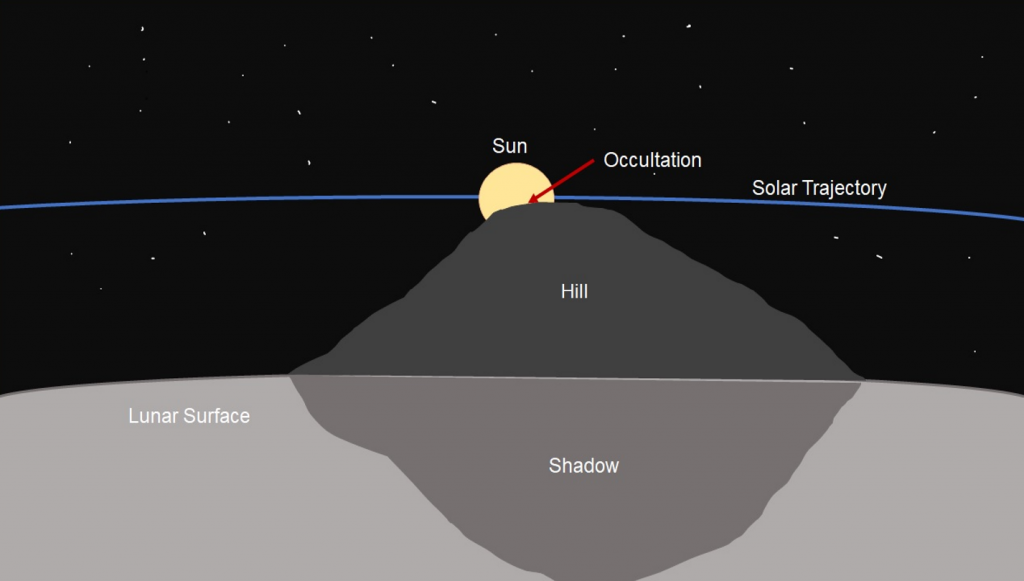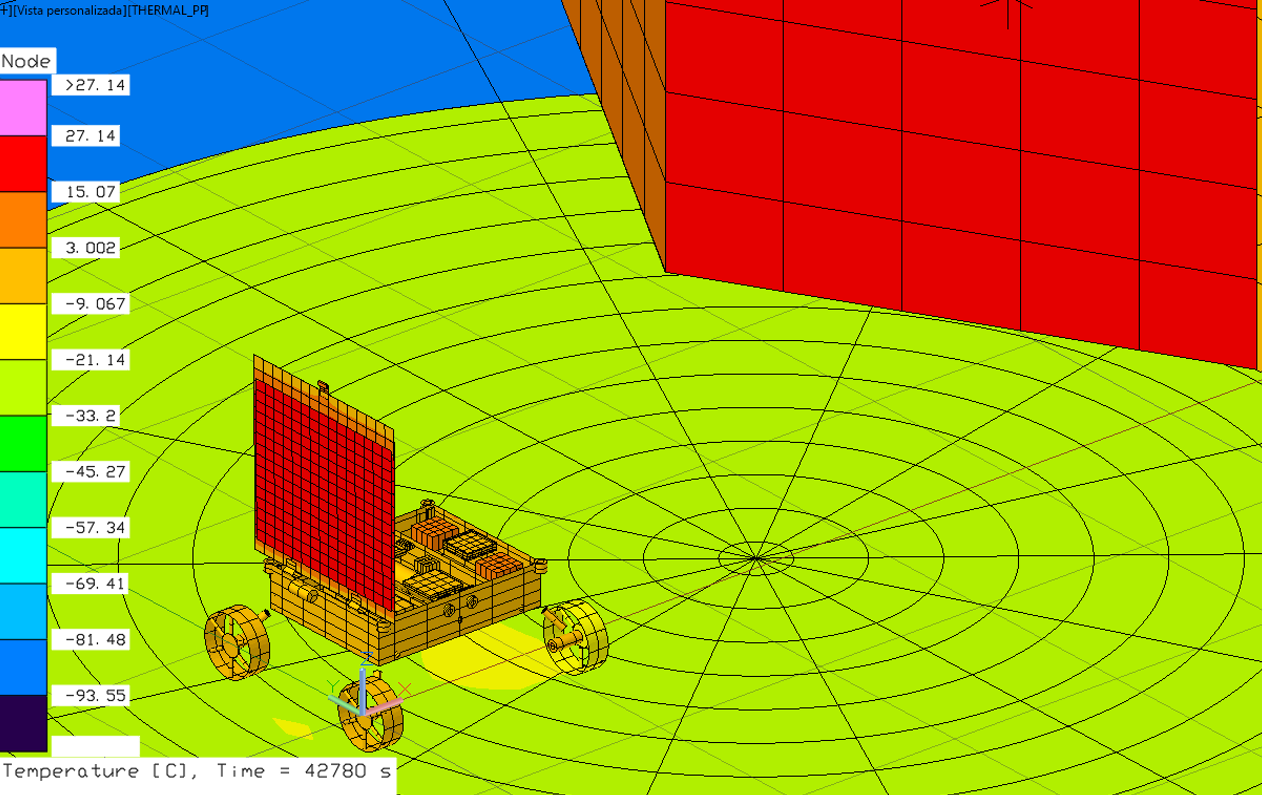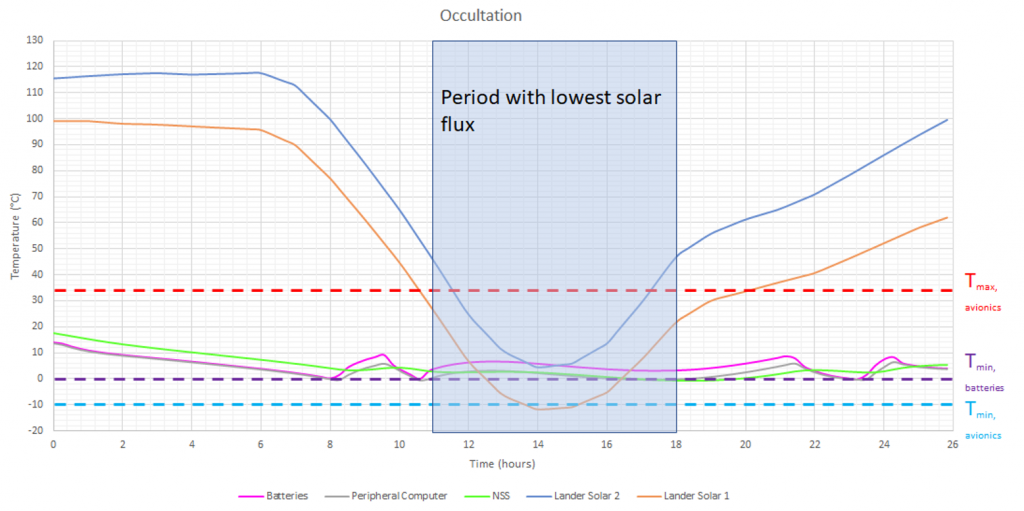Occultation means to hide or conceal from light. In space these are most commonly due to partial or total eclipses. During MoonRanger’s mission, one occultation is expected to occur over 24 hours when a high, distant hilltop partially blocks light reaching the rover. During this period the robot’s solar array only generates reduced power, and the rover isn’t heated with the same sun intensity that it typically experiences. This creates the double liability of sustained cooling and reduced power availability for resistive heating that would ordinarily put the rover at risk of survival.
Despite these challenges, MoonRanger will survive the occultation with an ingenious operational strategy of nestling close to the warm lander that blocks some of its radiation heat loss to cold space.

MoonRanger will adapt to the reduced light in two ways: taking shelter close to the lander and turning off all non-essential features. The lander has several solar panels, which are pointed directly to the sun. MoonRanger will park itself in front of the sun-exposed side of the lander for the duration of the occultation period. The lander will have more power and heat than MoonRanger, and subsequently it will passively, transfer some of it to the rover by radiation. The lander’s solar panel also creates a thermal micro-environment. Within the rover’s immediate surroundings, the regolith surface temperatures around the lander will be higher than in normal measurements. The lander’s warm solar panels will radiate heat to MoonRanger and keep it warm.
Due to the lack of an atmosphere on the Moon, radiation is the primary heat transfer mechanism rather than convection that we experience on Earth. Radiation is one of the three ways bodies can exchange heat (the others being convection and conduction) – it happens because of a difference in temperature between two bodies and is proportional to the difference of the fourth power of the temperatures. Radiation is also weaker in comparison to conduction or convection as it varies by the difference of temperatures to the fourth power. Every object warmer than absolute zero emits infrared radiation. The difference between the bodies’ emission and absorption of infrared light according to their temperatures is the basis of heat transfer. In this case, the lander emits more infrared light, which creates the gradient between it and MoonRanger for heat transfer.

During this occultation period, several of MoonRanger’s functions are powered down except for essential avionics, power management system, and a few other parts. While the rover is parked it doesn’t have to turn its wheels, use its cameras, plan a path or even run its autonomy software. 16 watts of resistive heating is preferentially applied to the batteries because they need to remain above 0˚C to charge. The remainder of the avionics need only be maintained at -10°C to function.
The net effect is an ingenious and elegant solution to what at first looked like a mission-ending consequence of the occultation.

By: Kerry Mills
